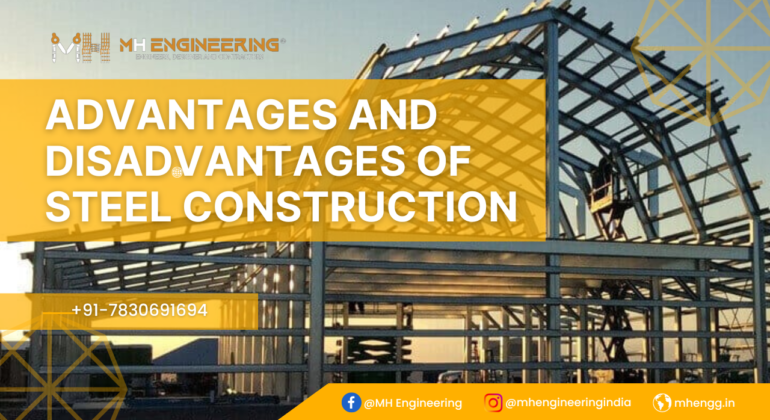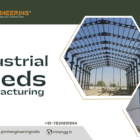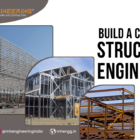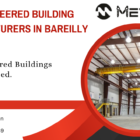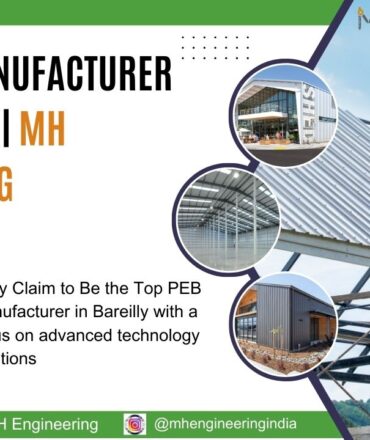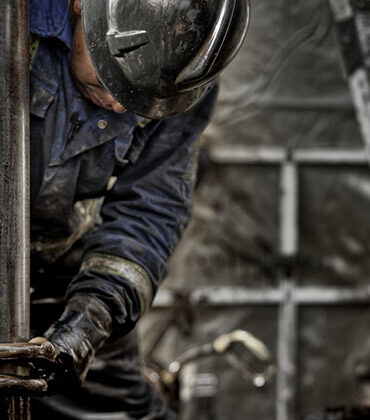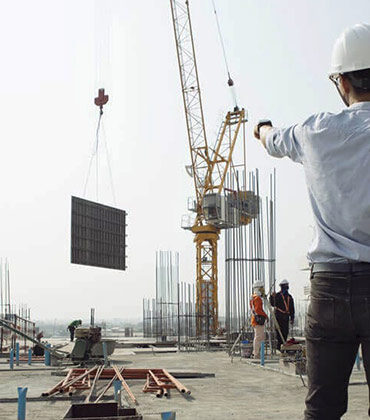Benefits of Steel Construction:
1. Reliability of Steel Construction:
Steel structures are very reliable. Reasons for this reliability include consistency and uniformity in properties, better quality control due to factory manufacturing for steel construction, and greater elasticity and flexibility. If individual samples of certain types of steel are tested in the laboratory for yield stress, ultimate strength, and elongation, the variation is much less than for other materials such as concrete and wood for steel construction. Furthermore, being a truly homogeneous and elastic material, steel satisfies most of the assumptions involved in the analysis and derivation of design formulas and the results obtained are reliable and trustworthy for steel construction. This cannot happen in concrete structures due to heterogeneous materials, cracking, and non-linearity of the stress-strain relationship.
2. Industrial Behavior Steel Construction:
Rolled steel sections for steel construction are manufactured in factories. Additionally, members can be cut and prepared for assembly in factories, with only these components being joined on-site by installing rivets or bolts and welding the various components. Sometimes parts of the structure are also assembled in factories, i.e. there is a greater adaptation to prefabrication. In such cases manual errors are greatly reduced, the speed of steel construction increases, and total cost is reduced.
3. Less Time/Higher Construction Speed:
Due to the industrial nature of steel manufacturing. Work progress is increasingly making steel construction economical. The reason is that these structures can be put into use first. Reductions in labor costs and overhead changes and benefits derived from the early use of the building contribute to the economy.
4. Steel Construction High Strength and lightweight nature:
The high strength of steel per unit weight means that the dead load will be small. It should be noted that dead load constitutes a large part of the total load on the structure of steel construction. When dead load is reduced, the bottom members become even smaller due to less load acting on them. For long-span bridges, tall buildings, and structures with weak foundations, this fact holds great significance for steel construction.

5. Uniformity, Durability and Performance:
Steel is a very homogeneous and uniform material. Hence, it meets the fundamental assumptions of the majority of analysis and design equations, If properly maintained by painting, etc. the properties of steel do not change significantly over time; Whereas, in reinforced concrete structures the properties of concrete are significantly modified with time. Therefore, steel structures are more durable for steel construction.
6. Elasticity of Metal for Steel Construction:
Steel behaves closer to the design assumption than most other materials because it obeys Hooke’s law up to fairly high stresses. The stress generated remains proportional to the applied stress, and the stress-strain diagram remains a straight line. The moments of inertia obtained for a reinforced concrete structure are indeterminate for steel construction.
7. Resilience and warning before failure of steel construction:
The property of a material by which it can withstand extensive deformation without failure under high tensile stress is called ductility. Mild steel is an extremely ductile material. The percentage elongation of a standard tension test specimen after fracture can range from 25 to 30%. This gives a visual deflection of evidence of impending failure in case of overload. Excess load can be removed from the structure to prevent collapse which can be beneficial for steel construction. Even if a collapse does occur, there is still time for occupants to evacuate the building. In structural members under normal load, high-stress concentrations develop at various points. By being able to locally produce common structural steel for steel construction, its flexible nature allows for the redistribution of stresses and prevents premature failures for steel construction.
8. Additions to existing structures for steel construction:
It is very easy to make additions to existing steel structures for steel construction. Connections between new and existing structures can be planned very effectively. Existing steel frame buildings can be expanded by adding new bays or even entirely new wings. Additionally, it is possible to widen steel braces in many cases.
9. Potential Reuse for Steel Construction:
Steel section cabs can be reused after disassembling a structure.
10. Scrap Value:
Steel has scrap value even though it is not recyclable in its current form.

Disadvantages of Steel Construction:
1. Higher maintenance costs and more corrosion:
Most steel is prone to rusting when exposed to air and water and so should be painted from time to time. This requires additional cost and special care. In static design applications, the use of weathering steels eliminates this cost. If not properly maintained, steel members can lose 1 to 1.5 mm of thickness each year. Accordingly, such constructions can lose up to 35% of weight during their specified life and fail under external loads.
2. Fireproofing Cost:
Although steel members are not combustible, their strength reduces significantly as the temperature increases during a fire. At around 400ºC, creep becomes more pronounced. Creep is defined as plastic deformation under sustained load over a long period of time. This causes extremely large deflections/deformations in the main members forcing the other members to overstress or even collapse. Steel is an excellent conductor of heat and can transmit enough heat from a burning compartment to other parts of the building to start a fire. Additional costs are required to properly fireproof the building.
3. Sensitivity to Buckling:
Steel sections are generally a combination of thin plates. Furthermore, composite steel member dimensions are also smaller than reinforced concrete members. If these thin members are stressed, they are more likely to bow. Buckling is a type of collapse of members caused by sudden large-scale bending due to critical compressive load. When steel is used for columns it is sometimes not very economical as a lot of material has to be used just to strengthen the columns against buckling.
4. Higher initial cost/less availability:
In some countries, steel is not available in abundance and its initial cost is higher than other structural materials. This is the most important factor resulting in the decline of steel structures in these countries.
5. Aesthetic Design for Steel Construction:
For some types of buildings, steel forms are preferred architecturally. However, for most residential and office buildings, steel structures without the use of false ceilings and cladding are considered to have a poor aesthetic appearance. To improve the appearance of such structures, a lot of cost has to be spent on them. Cladding is a covering of metal, plastic, or wood that is applied to the surface of a structural member to completely surround it. Cladding not only protects the member but also improves its appearance.

